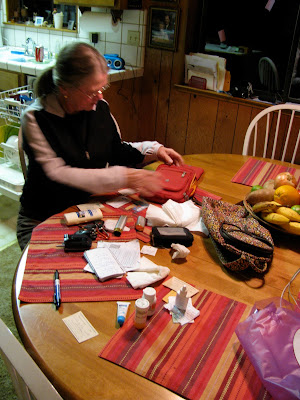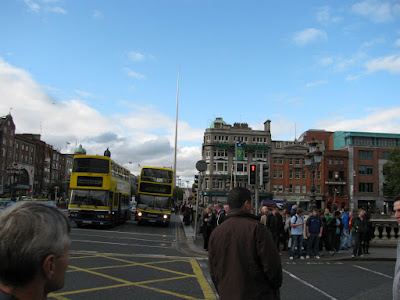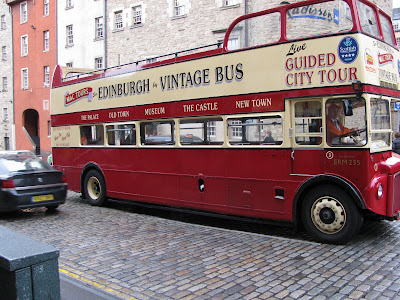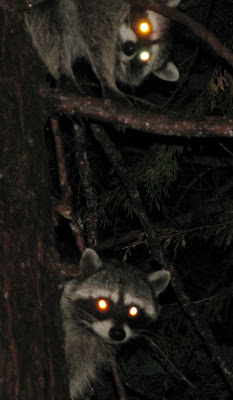2009 -- Blessing abound and it is mostly good stuff!
 Family got together recently to celebrate a birthday. Back row from left Brian, Zack and me. Front row Delaney, Ruth, Connor and Pat (Granddaughter Katie could not be with us)
Family got together recently to celebrate a birthday. Back row from left Brian, Zack and me. Front row Delaney, Ruth, Connor and Pat (Granddaughter Katie could not be with us)The year began almost the way it ended: family nearby, hikes and snowshoe walks in the state park, a few ski days and a few visits to the doctor (routine at our ages).
A highlight last winter was a first-ever trip to the Palm Desert area of California to spend a week, courtesy of a raffle we won at the park where we volunteer. We had a lovely time at the Marriott Resort in a posh condo overlooking one of the golf courses, and visited Joshua Tree National Park and wandered the desert and ate out a lot -- our idea of a perfect vacation.
Our granddaughter Delaney has "ski days" for PE at her junior high school, so I went along a few times, plus used my season pass more often, and ended up getting in more ski days than ever -- and an injury-free season!
Local and regional theaters offered lots of music and drama, and we have season tickets to theater and catch as many other music events as possible.
Church is a constant part of our lives and Pat teaches and serves on the education board, and I am on the mission board. We now belong to the First Congregationalist Church of Murphys, though I suspect I will always be a Methodist at heart.
For spiritual balance I play poker every two weeks with a group of friends, and coming home on unplowed roads after a blizzard late one night proved to be an adventure, one that turned out well thanks to son Zack coming to the rescue in my old pickup truck.
We spent one week aboard s/v Good News in San Francisco Bay during the winter, then made a post-Easter trip to our favorite part of Mexico -- Tenacatita Bay -- to visit friends Michael and Sylvia. We left as a swine flu scare was spreading, but stayed healthy. The scariest thing was the Los Angeles airport.
One of the joys of having adult children living nearby is that we get to animal-sit for Ruth's and Brian's expanding menagerie -- one large dog, five cats, two horses and whatever wildlife wanders by (deer, bear, raccoon). They refuse to let us give them a goat, which they consider to be mountain lion bait.
Spring and summer were filled with days volunteering at Calaveras Big Trees State Park. Pat teaches children 3-6 in the "Cubs" program, I lead guided walks of the Sequoia grove, and we both patrol the trails as part of the team watching out for visitors and helped with campfire programs..
We made short trips to San Francisco by boat to see the Giants play, to Yosemite to stare at waterfalls, to Santa Rosa to visit our friend Frank McCulloch, and on to the north coast to camp with Ruth's family in the coastal redwoods.
September was great. Friends Warren and Marsha King visited from Seattle, we met my big "brother" Roy Richardson and wife in San Francisco, and then flew off to Ireland and Scotland for two weeks of pubs and roots, castles and B&Bs.
Fall flew by with more time spent in the park, a good visit with sailor/friends Sylvia and Michael and Dan and Lorraine here at the cabin.
In late summer Pat fell and broke her nose -- not funny -- and had minor surgery as a result.
 An early December snowfall makes everything look great!
An early December snowfall makes everything look great!One odd blessing came our way this year via Internet. We have managed to renew contact with old friends from school, distant relatives, newspapers and our former home towns across the country thanks to email and Facebook. We don't Tweet, but we do chat with friends by computer almost daily.
By the time December rolled around son Zack was hired to work at Bear Valley ski resort, and I was there for skiing the opening day. The second day I took a hard fall and bruised a few ribs, an experience I recall from my soccer-playing days in Modesto, but that will be healed in time for more skiing later. Pat is understanding.
My grandson Connor, who is smarter than most people, has pointed out that in 2010 I will turn 70 and -- in his opinion -- will officially become a codger. Or curmudgeon. I can't remember.
Not there yet.
A disadvantage of aging is that we lost some friends and family members this year to age, Cancer and accidents. But we know how privileged we were to have shared in their lives. Each brought joy to us and we have not forgotten them.
We are learning to live each day as a gift.
We've been blessed by each other, and our children and grandchildren, and good friends all across the country.
May the blessing continue for you and yours in 2010.















































